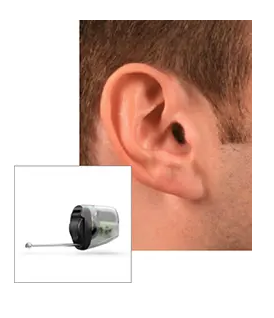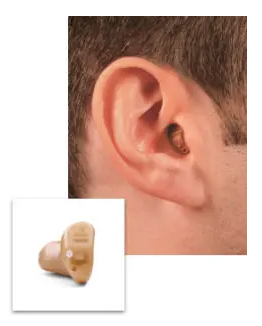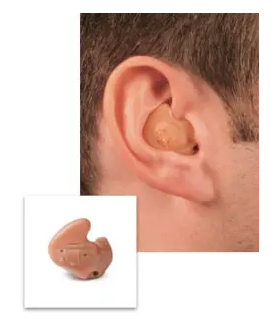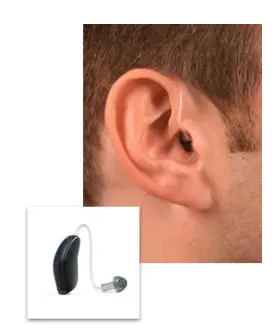Hearing Aid Styles

Invisible-In-The-Canal (IIC)
The invisible-in-the-canal (IIC) model is the smallest device currently available. The entire hearing aid sits inside the ear canal, making it practically invisible. Since this model is so small, it cannot fit any additional features and also takes the smallest batteries. The smaller the battery, the quicker they drain. Since this device sits so deep inside the ear, it is less likely to pick up background noise, such as wind, but is prone to earwax blockage. This model can treat mild to moderate hearing loss.

Completely-In-The-Canal (CIC)
The completely-in-the-canal (CIC) model fits entirely inside the ear canal, making it almost invisible. The small size means there are very few additional features and the device requires a small battery with a short battery life. This model can treat mild to moderate hearing loss.

In-The-Ear (ITE)
The in-the-ear (ITE) model comes in two versions; one that fills only the lower part of the outer ear (half shell) and one that fills most of the outer ear (full shell). Since this model is even larger than the last few, it can contain significantly more features and a larger battery. This device is more visible than the others and picks up more background noise, like wind. This model is appropriate for mild to severe hearing loss.

Receiver-In-Canal (RIC)
The receiver-in-canal (RIC) and open fit models have two parts connected with a thin wire. The portion that sits in the ear canal is small, meaning the ear canal is not fully blocked. This enables low-frequency sounds to enter the ear naturally; high-frequency sounds are still amplified through the hearing aid. These models are appropriate for high-frequency mild to moderate hearing loss.

Behind-The-Ear (BTE)
The behind-the-ear (BTE) model consists of two parts, one that fits inside the ear canal and one that hooks behind the ear. This is the largest and most powerful of all the devices. The BTE can fit the most additional features and uses the largest battery. This device is appropriate for almost all types of hearing loss.

Bluetooth
Bluetooth is a wireless communication platform that enables data to be transferred between two or more electronic devices through the use of high frequency radio waves. Bluetooth-compatible digital hearing aids provide improved functionality and convenience. By streaming signals from your electronic devices directly to your hearing aids, you are better able to stay connected.
Because Bluetooth technology requires more power than a typical hearing aid battery can generate, some instruments rely on an additional accessory, called a streamer. This device acts as a go-between, allowing your hearing aid to communicate with the other electronic device.
Not only does this allow for communication between the hearing aid and another device, but it also enables two hearing aids to communicate, giving you an improved hearing experience.

Rechargeable Hearing Aids
Rechargeable Hearing Aids are one of the top most requested features that hearing aid uses are asking for. They free users from having to deal with the tiresome task of changing the batteries, performing daily battery tests and always carrying around extra batteries. Rechargeable batteries are also environmentally friendly as they save users from throwing away nearly 100 hearing aid batteries per year.
The benefits of rechargeable batteries plentiful:
- Your charger can be your devices’ overnight home, so you don’t have to worry about losing them.
- You don’t need to worry about having extra batteries on hand.
- You will save time and money by not having to purchase disposable batteries.
Many rechargeable batteries can provide up to 24 hours of hearing from a single charge. The hearing aid may also include a fast-charging option, which gives uses a few hours of immediate use.
